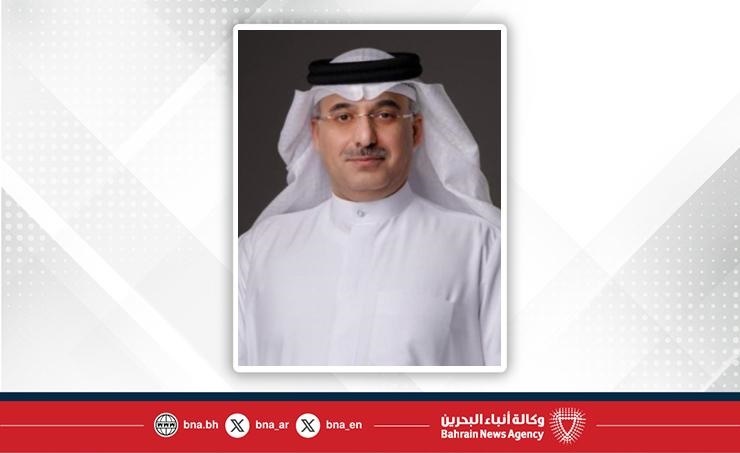Bahraini engineering team successfully designs, develops, and operates Al Munther satellite

Manama, Mar. 15 (BNA): The Bahraini engineering team behind the design, development, and operation of Al Munther satellite expressed pride in their achievement, highlighting the dedication and expertise required to complete the project and overcome challenges at every stage.
Dr. Mohamed Ibrahim Al Aseeri, CEO of the National Space Science Agency (NSSA), said that the launch aligns with the vision of His Majesty King Hamad bin Isa Al Khalifa, the Supreme Commander of the Armed Forces, to position the Kingdom of Bahrain as a leader in the space sector. He noted that the project was implemented under the directives of His Royal Highness Prince Salman bin Hamad Al Khalifa, the Crown Prince, Deputy Supreme Commander of the Armed Forces, and Prime Minister, with continuous support from Lieutenant General His Highness Shaikh Nasser bin Hamad Al Khalifa, National Security Advisor, Royal Guard Commander, and Secretary General of the Supreme Defence Council.
Al Munther, developed entirely by Bahraini engineers, represents a major step in the Kingdom’s technological progress. NSSA engineers played a key role in every phase, from planning and design to testing and deployment, ensuring the satellite met all operational requirements. The project provided Bahraini engineers with hands-on experience in complex space systems, strengthening national expertise for future missions.
Project Manager Aysha Al Haram highlighted the team’s commitment to delivering an advanced nanosatellite, noting that the project was both a challenge and an opportunity for Bahraini engineers to refine their skills in spacecraft design, testing, and assembly. Yaqoob Al Qassab, responsible for system engineering, explained that achieving precise integration between the satellite’s power, control, communications, and sensing systems was critical to ensuring its functionality in orbit. He also underscored the team’s adherence to international guidelines on space debris mitigation and the sustainability of space activities.
Amina Al Balooshi, who led risk and quality management, underlined the importance of assessing potential risks from the design phase through to launch and operation. The team conducted extensive evaluations to ensure the satellite’s resilience against extreme conditions such as launch vibrations, thermal fluctuations, and electromagnetic interference. Strict quality control measures were implemented to ensure all components met operational standards, increasing the satellite’s chances of long-term functionality in orbit.
Ali Al Mahmood, who oversaw software development, noted that cybersecurity was a key focus, with encryption and authentication measures ensuring the protection of satellite data. Reem Sinan, responsible for communications, highlighted that the NSSA ground station was designed to manage Al Munther and support future missions, enhancing Bahrain’s operational independence in space.
Ali Al Qarran, responsible for the satellite’s power system, noted that Al Munther builds on the experience gained from Bahrain’s previous satellite, Light-1. While Light-1 focused on studying gamma rays, Al Munther introduced new challenges, including AI-driven data processing, integrated payload design, and cybersecurity applications. This transition marked a step toward greater independence in spacecraft development, enhancing Bahraini engineers’ expertise in circuit design, system integration, and performance analysis. These achievements position Bahrain for more complex space missions and support its shift toward a knowledge-based economy.
Ahmed Bushlaibi, who led mission planning, explained that optimising the satellite’s orbit was critical to maximising data collection efficiency and communication with the NSSA ground station. This involved detailed calculations on orbital path, ground station coverage, and transmission windows to ensure reliable command and data exchange. Following deployment, the team continues to monitor the satellite’s trajectory and adjust operational strategies to maintain optimal performance.
Ashraf Khater, responsible for mechanical systems, explained that the satellite’s structural design was engineered to withstand the harsh conditions of space while achieving an optimal balance between weight, durability, and size. This ensured that Al Munther could accommodate all scientific payloads and electronic systems without compromising its performance in orbit.
Muneera Al Malki, who developed the onboard camera system, highlighted its real-time image processing capabilities, enabling efficient data collection and transmission. She also noted that the camera’s performance was carefully engineered to withstand various challenges, including vibrations during launch, exposure to cosmic radiation, and rapid temperature fluctuations in space.
Marwan Al Meer, overseeing ground operations, highlighted the establishment of Bahrain’s first ground station as a key milestone, enabling independent satellite management and future expansion. He noted that securing and coordinating satellite frequencies required collaboration with local and international regulators. The station will not only support Al Munther but also future projects, strengthening Bahrain’s role in space operations and international cooperation.
With Al Munther successfully in orbit, the project reinforces Bahrain’s growing space sector, proving national capabilities in satellite engineering and laying the foundation for future advancements in space technology.





